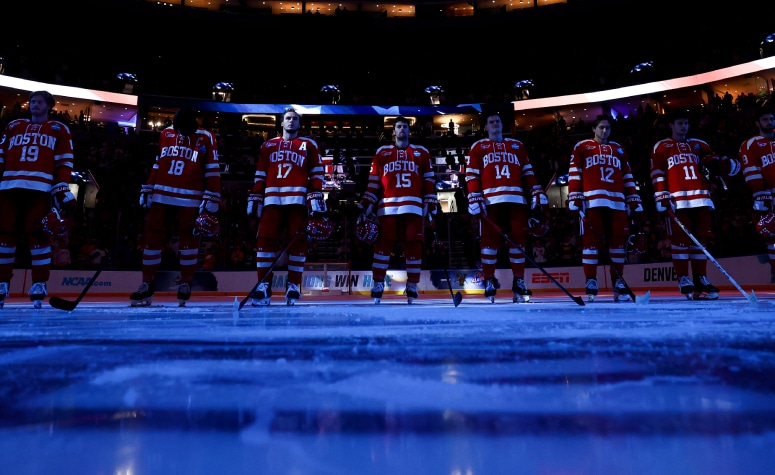College Sports
Due to recent Frozen Fours, will college hockey recruiting change?
BU before playing Western Michigan in the national championship this spring. (Tyler Schank/Getty Images) When Western Michigan took care of business against Boston University, 6-2, in this season’s Division 1 men’s college hockey national championship, a narrative that had been in the works for a long time began to bubble. Young, high-end teams can’t win. […]


BU before playing Western Michigan in the national championship this spring. (Tyler Schank/Getty Images)
When Western Michigan took care of business against Boston University, 6-2, in this season’s Division 1 men’s college hockey national championship, a narrative that had been in the works for a long time began to bubble.
Young, high-end teams can’t win.
The Terriers had just lost. Boston College, the No. 1 team throughout most of the season, lost to Denver again — this time before the Frozen Four. Last season, BC, boasting some of the best freshmen in college hockey history, fell to Denver in the national championship. In 2023, a Minnesota team featuring freshmen such as Logan Cooley, Jimmy Snuggerud and sophomore Matthew Knies lost to Quinnipiac in the national championship.
College hockey has had an influx of top prospects choose the NCAA. BU’s Macklin Celebrini did so in 2023 and won the Hobey Baker. The year before, Adam Fantilli took the college hockey world by storm at Michigan, winning the Hobey Baker. Both were one-and-dones.
Hockey is a copycat sport. When a strategy works for one team, others try and use it to their advantage, too.
That can be true in recruiting, an ever-changing landscape.
So, are the young, high-end teams at a disadvantage? And will recruiting change due to this perception?